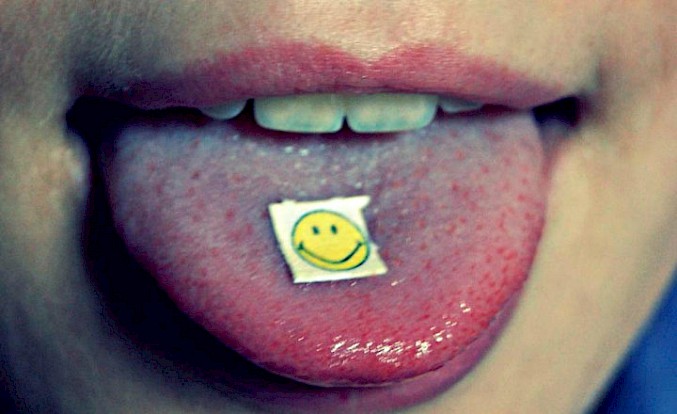Uncategorized
The Mysteries of LSD: Understanding Crystals, Acid, and the Chemistry Behind the Substance
LSD, or lysergic acid diethylamide, is a powerful hallucinogenic drug that has intrigued and baffled scientists, users, and the general public alike since its discovery.
Known for its profound effects on perception and consciousness, LSD has earned a reputation that is both enigmatic and controversial.
In this comprehensive guide, we’ll delve into the nature of LSD, explore the concept of LSD crystals, and address some common questions about this complex substance.
What Does LSD Stand For?
Before we dive into the specifics of LSD crystals and usage, it’s essential to clarify what LSD stands for.
LSD is an abbreviation for lysergic acid diethylamide.
This psychedelic compound is derived from ergot, a fungus that grows on rye and other grains. It was first synthesized in 1938 by Swiss chemist Albert Hofmann at the Sandoz Laboratories.
Although Hofmann initially sought to create a circulatory stimulant, he soon discovered the compound’s potent psychoactive effects.
LSD is known for its ability to induce intense visual and auditory hallucinations, altered sense of time, and profound shifts in consciousness.
Its effects are mediated through its interaction with serotonin receptors in the brain, particularly the 5-HT2A receptor.

Can My LSD Have Crystals?
One of the questions that often arises is whether LSD can appear in the form of crystals. The answer is yes, LSD can manifest in various forms, including crystals.
Here’s a closer look at the different forms of LSD:
LSD Crystals
LSD crystals are less common but are a real form of the substance.
These crystals are essentially LSD in its purest form, often referred to as “LSD crystals” or “LSD shards.”
They can appear as small, clear, or slightly opaque crystals and are typically very potent.
Why Crystals?
Crystallized LSD is the result of a purification process. Pure LSD is soluble in water and can be crystallized through various chemical processes, including evaporation or precipitation.
Crystals might be preferred by some users or dealers because they can be more easily measured and dosed compared to liquid forms.
Dosage and Potency:
Because LSD crystals are highly concentrated, even a small amount can produce intense effects. It’s crucial for users to be aware of the dosage, as the potency of LSD crystals can vary significantly.
The effects of LSD crystals are generally similar to other forms of LSD, including acid tabs or liquid, but their high potency requires careful handling and accurate dosing.
Other Forms of LSD
- LSD Liquid: This is LSD dissolved in a liquid, often ethanol or distilled water. It’s typically distributed in small vials or dropped onto paper to create blotter acid.
- LSD Blotter Paper: One of the most common forms, this involves LSD being absorbed onto small pieces of blotter paper. The paper is perforated into small squares, each containing a dose of LSD.
- LSD Gel Tabs: Similar to blotter paper, but LSD is embedded in gelatin. These are usually more durable and less likely to degrade over time.
- LSD Microdots: These are tiny, often colorful pills containing LSD. They are generally less common today but were popular in the past.
Acid Drug: A Common Misnomer
The term “acid” is often used colloquially to refer to LSD. While the term “acid” might sound simplistic, it is derived from the drug’s chemical name.
The term gained popularity in the 1960s counterculture and has stuck around since then.
Is “Acid” a Misnomer?
The term “acid” is somewhat misleading because it suggests a direct connection to the acidity or corrosiveness of the substance.
In reality, LSD is a complex chemical compound with a specific effect on the brain’s serotonin system rather than a substance with acidic properties.
However, the term has become ingrained in popular culture and is widely recognized.
Can You Just Take LSD Crystals?
Taking LSD crystals involves specific considerations compared to other forms of LSD. Here are some important factors to keep in mind:

Proper Handling
LSD crystals should be handled with care. Their high potency means that a tiny amount can have a significant effect.
It’s important to use accurate measuring tools to ensure proper dosing. Misestimating the dose can lead to an overwhelming experience or a lack of desired effects.
Dosage and Measurement
Due to their potency, LSD crystals are often measured using a microgram scale, as LSD is active in very small quantities (typically in the range of 20 to 100 micrograms per dose).
Inaccurate dosing can lead to unexpected and potentially overwhelming effects. Users should always start with a low dose to gauge their sensitivity.
Storage and Stability
LSD crystals should be stored in a cool, dark place to maintain their potency. Exposure to light, heat, and air can degrade the substance over time.
Proper storage ensures that the LSD remains effective and safe to use.
Effects and Experience
The effects of LSD crystals are similar to other forms of LSD but can be more intense due to their purity.
Users can expect a range of psychedelic effects, including visual and auditory hallucinations, changes in perception, and an altered sense of time.
It is essential for users to be in a safe and comfortable environment and ideally to have a trusted, sober individual present to ensure their well-being during the experience.
The Science of LSD: How It Works
Understanding how LSD works can provide insights into its effects and the importance of responsible use.
LSD primarily affects the brain’s serotonin system.
Serotonin is a neurotransmitter that plays a role in mood, perception, and cognition.
Serotonin Receptors:
LSD has a high affinity for the 5-HT2A receptor, a subtype of serotonin receptor.
When LSD binds to these receptors, it leads to altered sensory perceptions and cognitive processes.
This interaction is thought to be responsible for the vivid hallucinations and changes in consciousness experienced during an LSD trip.
Effects on the Brain:
LSD can alter brain connectivity patterns, leading to increased communication between different regions of the brain.
This altered connectivity can result in the merging of sensory experiences (synesthesia), where users might “see” sounds or “hear” colors.
The Risks and Considerations
While LSD can offer profound experiences, it is not without risks.
Understanding these risks can help users make informed decisions.
Psychological Risks
LSD can induce powerful emotional and psychological experiences.
For some individuals, this can lead to anxiety, paranoia, or even psychotic episodes.
People with a history of mental health issues or a predisposition to mental illness should exercise extreme caution or avoid LSD altogether.
Physical Risks
LSD is not known for causing physical addiction or significant physical harm.
However, it can lead to risky behavior due to impaired judgment.
Users should be mindful of their surroundings and avoid activities that could be dangerous while under the influence.
Legal Risks
The legality of LSD varies by country and region. In many places, LSD is classified as a controlled substance, making its possession, use, and distribution illegal.
Engaging in illegal activities carries risks, including legal consequences and potential harm to one’s future opportunities.
Harm Reduction Strategies
If you or someone you know decides to use LSD, harm reduction strategies can help ensure a safer experience. Here are some key tips:
- Start with a Low Dose: Begin with a smaller amount to assess individual sensitivity and response.
- Ensure a Safe Environment: Use LSD in a safe, comfortable setting, preferably with a trusted and sober person present.
- Avoid Mixing Substances: Combining LSD with other substances can increase risks and unpredictability.
- Stay Hydrated: Drink water but avoid excessive consumption, as dehydration can occur.
- Have a Plan: Know what to do if the experience becomes overwhelming, including having access to support and resources.
Conclusion

LSD remains one of the most fascinating and controversial substances in modern pharmacology.
Whether it appears as crystals, liquid, or blotter paper, its effects on the mind and perception continue to captivate those who encounter it.
Understanding what LSD stands for, the various forms it can take, and the considerations for its use are crucial for anyone interested in exploring its effects.
As with any powerful substance, it is essential to approach LSD with respect, knowledge, and caution.
By doing so, users can better appreciate the complex and profound experiences it offers while minimizing risks and ensuring a safer and more informed journey.
Remember, while the allure of LSD can be compelling, making informed decisions and prioritizing safety are paramount.
If you have questions or concerns about LSD or its effects, seeking advice from medical professionals or substance use counselors can provide valuable guidance and support.
